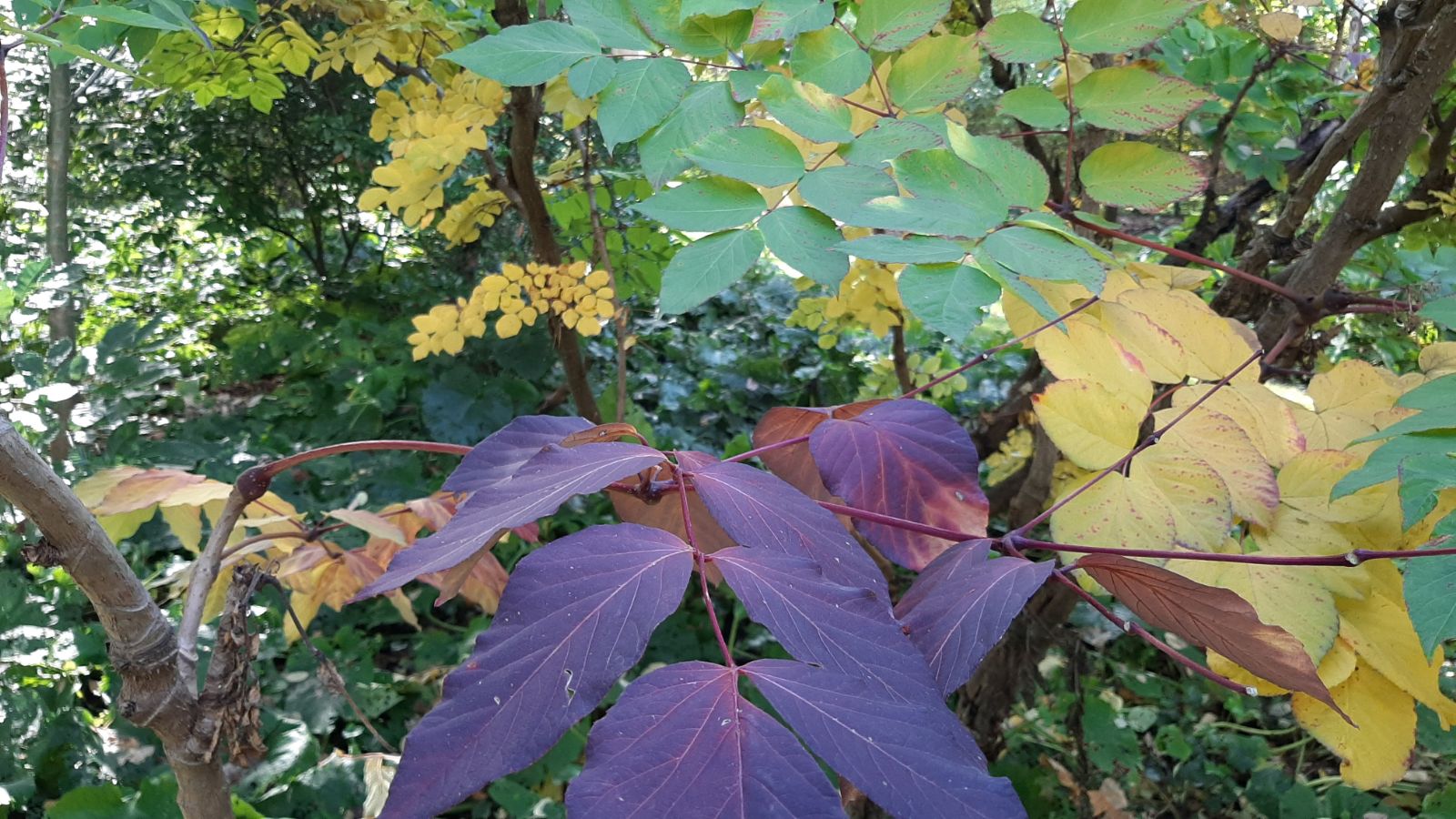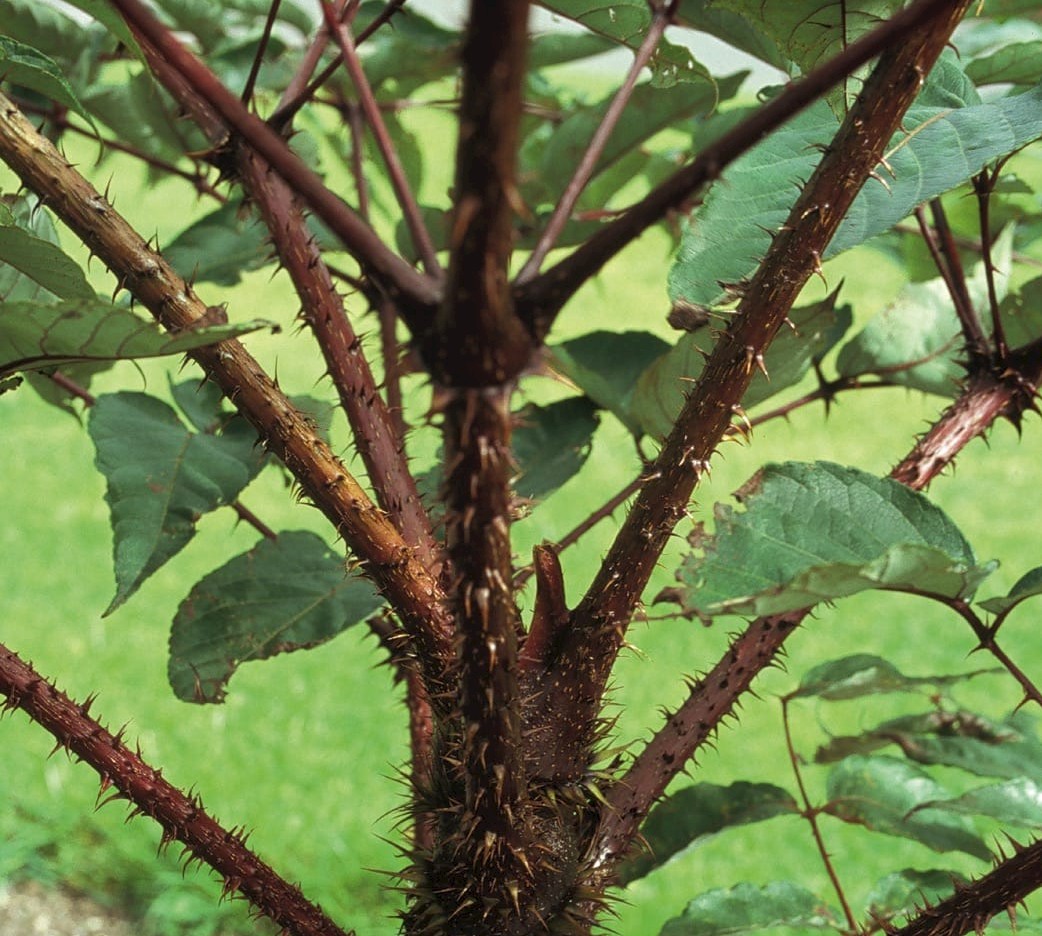Aralia
Credits
Article from Bean's Trees and Shrubs Hardy in the British Isles
Article from New Trees by John Grimshaw & Ross Bayton
Recommended citation
'Aralia' from the website Trees and Shrubs Online (treesandshrubsonline.
Family
- Araliaceae
Common Names
- Angelica Trees
- Aralias
- Devil's Walking Stick
- Hercules' Club
Aralia currently has 69 species, and is distributed primarily in the northern hemisphere, though with extension into Malesia and New Guinea. There are also disjunct populations in Mexico, Central America, the Greater Antilles and interior South America (Frodin et al. 2003). Aralias are typically small trees or shrubs, though climbing and herbaceous species are known. The variety of morphological forms is reflected in the number of common names used for this genus. The stems are often stout and spiny (hence the vernacular names Devil’s Walking Stick, Hercules’ Club) or unarmed. The leaves are alternate and pinnate, with one to four orders of branching. Typically, the leaves have stipules and the rachis is articulated. The flowers are hermaphrodite, in terminal inflorescences. These can be paniculate, corymbose or umbellate, and are composed of multiple umbels, racemes or heads. Rarely, the inflorescences comprise solitary umbels only. The individual flowers are 5– to 8-merous. The fruit is a globose berry (Wen 1993). Aralia is closely related to Panax L. (ginseng) and Sciadodendron Griseb., and DNA studies indicate that the boundaries between these genera may have to be altered (Wen 2001).
As currently delimited, Aralia is a genus that morphs comfortably albeit unusually between herbs, shrubs and true trees. Most species are noted for their bold foliage, and the most familiar in gardens – A. elata – is particularly valued in its variegated clones. With the current fashion for big bold-foliaged plants Aralia has become very popular, and species of all growth forms find a valued niche in planting schemes where their stature is appreciated. The large compound inflorescence can also be spectacular, and is an often overlooked asset in members of this genus. The plants are not in general fussy about soils, but appreciate adequate moisture, and in the case of the larger-leaved species, shelter from wind is useful.
Many species of Aralia in southeastern Asia are potentially tree-forming but may also be suckering multistemmed shrubs – a difficult group to categorise. They all have some degree of garden merit for their handsome foliage and large inflorescences, and it is probable that species will continue to be introduced. Among those in cultivation, A. bipinnata Blanco is potentially a tree to 7 m, its stems covered in stiff, conical prickles and bearing big bipinnate leaves with glabrous leaflets. It is found in dry places in Taiwan, where it has recently been collected (for example, B&SWJ 3137, RWJ 10060). Others include the widely distributed A. foliolosa Hance, up to 10 m tall with tripinnate leaves, and A. stipulata Franch., from Yunnan, also to 10 m but with bipinnate leaves. Aralia leschenaultii (DC.) J. Wen (syn. A. fragrans (D. Don) Jebb & J. Wen) has been grown for some time under the generic name Pentapanax but has not become widely known. It is a small tree, climber or epiphytic shrub, 5–15 m, with relatively small evergreen leaves. It has a wide distribution in wet forest conditions in southeastern Asia but has recently been introduced from Nepal (for example, HWJK 2385).
Bean’s Trees and Shrubs
Aralia
A genus of about thirty species, some of them herbaceous, in E. Asia, Australia, and N. America.


